

Fognet's Field Guide to OpenView Network Node Manager, 2nd Ed.
This book, published in 2006 and 2008, was the most popular title on HP OpenView for 5 years. Even though NNM version 7 is no longer supported by HP, many shops still run this legacy product.
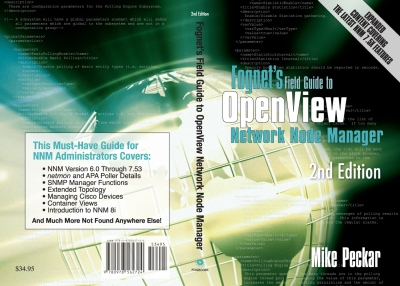 Now! Click here to download the ebook for FREE!
Now! Click here to download the ebook for FREE!

V3 Mindmap - Developed by Fognet, 2009: (Java Applet)
Note: This applet will not run in Chrome.
In firefox, Internet Explorer, and other browsers, the applet will run if
allowed.

The Medium is the Message: Improving Message Handling in
HP Operations (PDF)
(891k, 2010 HP Software Universe, Washington, DC, 2 Hrs)
NNM 8i: Let's get down to brass tacks, how much for the ape? (PDF)
(2,033k, 2008 HP Software Universe, Las Vegas, 1.5 Hrs)

Here is an example of a Syllaus for a course Fognet developed that was directed at operators who use the Java-based GUI of Operations manager for Windows. This is a good example of how Fognet can take a standard HP course and redevelop it to fit the customer's very specific needs:
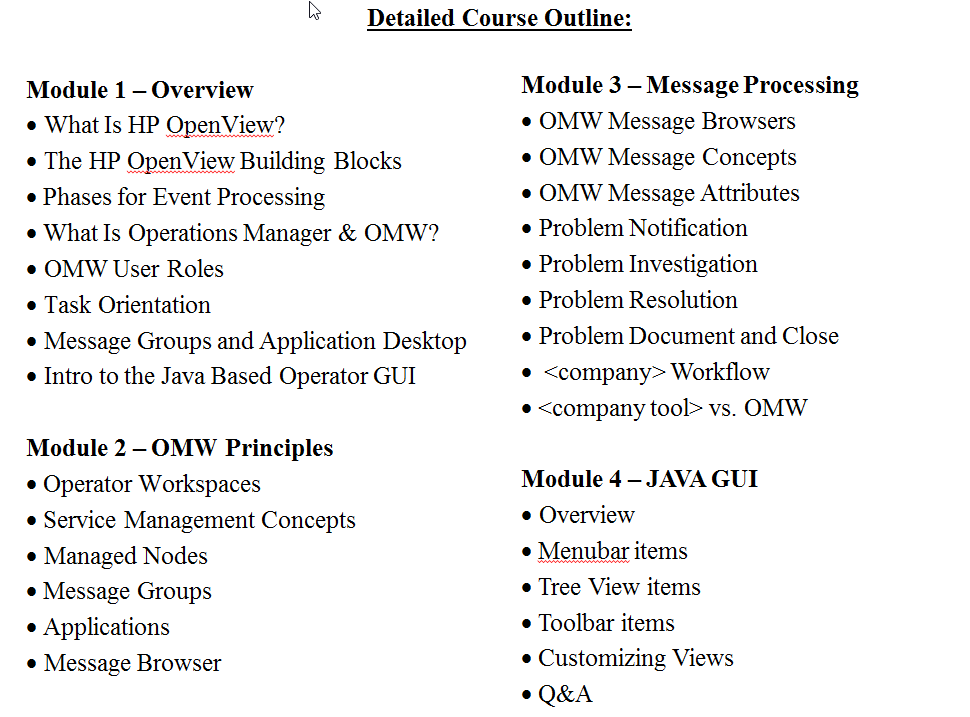

VPO, SNMP, and Crawfish Ettouffee (PDF)
(740k, 2001 OpenView Forum, New Orleans, 1 hr)
Intellectually-Challenged Plug-ins: Improving IT/Operations' Templates
for UNIX System Administration (PDF)
(795k,2000 HP Software Forum, Orlando, 1 hr)
Integrated SNMP management with HP OpenView IT/Operations and Network
Node Manager (Presentation - PDF) (369k, 1999)
(White Paper - DOC) (1999)
A Cow of a Different Color - Advanced Status with OpenView NNM (PDF)
(2,920k, 2006 HP Technology Forum, Houston, 4 Hrs)
Peeling the Oranges (and Reds and Greens) (PDF)
(939k, 2006 HP Software Forum, Miami, 2.5 Hrs)
The Rocky Road to Advanced Status in NNM (PDF)
(1003k, 2005 HP Software Forum, Denver, 2 hrs)
NNM Status: Soup to Nuts (PDF)
(911k, 2004 HP Software Forum, Montreal, 1 hr)
The Ups and Downs of NNM Status Polling (PDF)
(440k, 2003 HP Software Forum, Chicago, 1 Hr)
The Low Down on a Node Down (PDF)
(360k, 2002 HP Software Forum, Seatle, 1 hr)
White Paper: The Low Down on a Node Down: Improving on NNM's Default Status Event
Configuration Settings (HTML)
(DOC) (2002)
NNM Status Polling: The Big Uneasy (PDF)
(295k, 2001 HP Software Forum, New Orleans, 1 hr)
Article: High Availability Choices for OpenView (HTML)
(2004)
White Paper:OVO on Solaris Server Footprint Reduction (PDF) (2003)

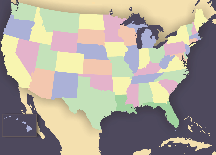 |
 |
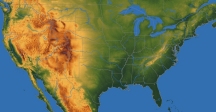 |
| Click for USA 4-color, BMP, 837K |
Click for USA 4-color, JPG, 37K |
Click for USA Relief, JPG, 126K |
 |
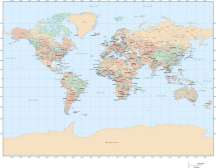 |
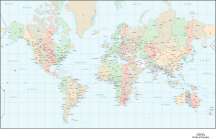 |
| Click for World, White & Grey Shadow, GIF, 25K |
Click for World Political 4-color, Miller Projection JPG, 103K |
Click for World 4-Color Timezones, JPG, 78K |
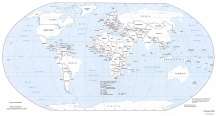 |
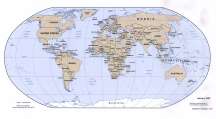 |
| Click for World 2-Color Robinson Projection, JPG, 353K |
Click for World 3-Color Robinson Projection, JPG, 189K |

Some of these I yanked from other sites, some I've added to along the way.
Fog is not simply air that is over saturated with water vapor, It is a collection of liquid water droplets or ice crystals suspended in the air at or near the Earth's surface. Fog is formed primarily via the heterogeneous nucleation process, though I am unclear whether fog can sometimes be formed by homegeneous nucleation as well.
HOMOGENEOUS NUCLEATION
Homogeneous nucleation requires a) that relative humidity exceed 100% (typically it must exceed it by several
hundred percent) and b) the presence of condensation nuclei that range in size from 0.2 to 0.002 microns.
Air in which the relative humity exceeds 100% is called supersaturated. I know the feeling.
Condensation nuclei are particles in the air like dust, pollen, smoke, or smog. in other words, any aerosol, which is a solid suspended in air.
HETEROGENEOUS NUCLEATION
Heterogeneous Nucleation differs from homogeneous nucleation in that: a) the nucleus of formation is larger, and b) the air need not be supersaturated. This process is more commonly associated with cloud formation, so much so that the nuclei are referred to as Cloud condenasation nuclei (CCN). They average about 1 micron is size and there are
two types:
HYGROSCOPIC - water-seeking
HYDROPHOBIC - water-repelling
Most particles are released into the atmosphere near the ground, this
is where largest concentrations of CCN are. There are generally more
over land than over oceans.
Particles in the atmosphere can be sometimes be seen as "shafts of light". Actually, you are not seeing the particles themselves, but the scattering of the sun's rays by them. What I have a hard time figuring out when I look at these rays is that while they seem to be coming in at differing angles, they are in fact all parallel relative to each other. These are called crepuscular rays.
HAZE - Haze is defined simply as a large concentration of nuclei - whose source is most typically dust or salt
particles.
Dry haze
Wet haze - condensation can occur at RH of 80%.
As the relative humidity increases and approaches 100% the haze
particles grow larger and condensation begins on the less-active
nuclei. When the visibility lowers to less than 1 km (.62 mi.) and the
air contains water droplets we have a FOG.
FOG
Fog forms in one of three ways:
-
by cooling the air
-
by evaporation of water into the air
-
mixing of air parcels
The types of fog are named with reference to the method by which the
air becomes saturated.
-
RADIATION (GROUND ) FOG - produced by the radiational
cooling at the surface
Favorable conditions:
-
clear nights,
-
shallow layer of moist air near the ground,
-
long nights,
-
light winds
Radiation fogs are common over land in late fall and winter. Radiation
fogs also form in low-lying areas VALLEY FOG. Cold air and high
moisture content in river valleys make them susceptible to radiation
fog. Radiation fogs form at the ground and are deepest around sunrise -
sometimes an increase in thickness at sunrise due to the evaporation of
dew.
-
ADVECTION FOG - air is cooled to saturation by having warm
moist air moving over a cold surface. Pacific Coast has alot of
advection fog since surface water near the coast is much colder than
the surface after farther off shore. Warm moist air from the Pacific
Ocean is advected over the cold coastal waters, chilling it from
below.. Advection fog, unlike radiation fog always involves the
movement of air. Fog, while a traffic hazard is very important water
source for some plants and animals - particularly along the coast of
California.
-
UPSLOPE FOG - forms as moist air flows up an elevated plain,
hill or mountain. Winter and spring on the east side of Rockies are a
common site, also in the Appalacian and Adirondak mountains. Upslope
fogs may last for several days.
The above methods of forming a fog all require cooling
-
EVAPORATION (or MIXING) FOG - formed by mixing two
unsaturated air masses. Moist air coming out of your mouth. Contrails
are another example. Saturation vapor pressure depends on the
temperature - the higher the temperature the higher the saturation
vapor pressure. Warm rain falling into a cool air mass near the surface
can form a fog. An example of such fog is the type that forms in the
vicinity of warm fronts.
-
STEAM FOG - forms when cold air moves over warm water
(heated outside swimming pool. water evaporates from the pool into the
air, increasing the dew point and if mixing is sufficient the air above
becomes saturated. The colder air directly above the water is heated
from below and rises forming appears to be steam. Over lakes in autumn
or winter. Steam fog also forms above a wet surface on a sunny day. -
after a rain shower.
Fogs do not "burn off". As the sun warms the ground, the air
near the ground warms, thereby lowering the relative humidity. This
warmer drier air mixes upwards, thus destroying the fog. Sometimes the
fog does not totally dissipate, but forms a stratus cloud.
















